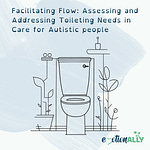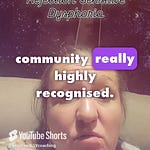Autistic Burnout: What It Is and How to Recognize It
“A Sisyphean Struggle with Daily Tasks” (Clarey et al., 2025) ABO can occur across the lifespan, but is most frequently first experienced in adolescence (Mantzalas et al., 2021) and can vary in length and intensity. It can last from months to years, and in some cases decades and is episodic in nature. ABO can be both acute and chronic in nature and can be triggered by stressful life events or transitions. Cumulative burnouts are increasingly difficult to recover from (Clarey et al., 2025). There is a risk of incomplete or protracted recovery. Whilst common it is not inevitable and should not be frames as intrinsic to the autistic experience although one study reported 69% of participants has experienced ABO with 46% experiencing recurrent episodes of ABO (Mantzalas et al., 2024).
Results from chronic life stress, in particular social and environmental challenges, caused by mismatch of expectations and ability (Raymaker et al., 2020). Essentially, being Autistic in a predominant neurotypical world. A key difference between ABO and depression is that individuals may still be able to engage with special interests during ABO (Mantzalas et al., 2022). ABO can often precede a diagnosis/ identification of Autism.
Described as ““incapacitation, exhaustion and distress in every area of life” (Engelbrecht et al., 2024), lasting 3 months or more the core components of Autistic burnout are:
• Mental exhaustion “a slow old computer that’s trying to run GoogleChrome. . . it just uses up a lot of RAM, drained, heavy, frozen” (Phung et al., 2021)
• Physical exhaustion
• Interpersonal and social withdrawal (whether as a recovery strategy or symptom is disputed in research)
With at least one of the following.
• Reduction in functioning (physical, occupational, academic, social, self-care etc.) which may not return to baseline.
• Confusion, executive dysfunction, disassociation, mood changes, memory difficulties
• Increased Autistic traits with reduction in ability to mask or camouflage these and heightened self-awareness of one’s Autistic traits and behaviour (Higgins et al., 2021). It is noteworthy that, “Autistic adults report that masking to ‘‘pass’’ as nonautistic is exhausting over time, but is used to avoid consequences of stigma and discrimination, including bullying and loss of opportunities” (Mantzalas et al., 2021).
Whilst there are some similarities, it is distinct from workplace burnout and depression. It is best conceptualised as an adaptive response to a harmful environment and expectations. There may be brief periods of energy, particularly in relation to special interests, but overall the individual is depleted
Current estimates are a lifetime prevalence of 69% with 46% of Autistic populations experiencing a high recurrence of ABO defined as 4 or more times across the lifespan (Engelbrecht et al., 2024).
Described by one Autistic interviewee as ‘Having all of your internal resources exhausted beyond measure and being left with no clean-up crew,’’ (Raymaker et al., 2020).
Features of concern and clues to impending burnout include:
• Increased suicidality (44% of Autistic experience suicidal ideation much higher than the general population) and/ or self-harm. Risk of which increases when ABO occurs concurrently with depression.
• Increased shutdowns and freezes (young people are often unable to distinguish between an extended shutdown and ABO when it is experienced)
• Decreased ability to process and produce speech
• Skills regression (loss of previously acquired skills) which may not return to baseline on recovery.
• Increased sensory sensitivities leading to meltdowns and shutdowns and avoidant behaviour.
• Reduced attention and concentration
• Increased emotionality/ heightened emotional responses and emotional dysregulation.
• Increased difficulties with planning, decision making, choice paralysis and change/ transitions, “like writer’s block” (Phung et al., 2021).
• Sleep and energy dysregulation including excessive sleepiness, disrupted sleep, insomnia.
• Negative impacts on physical and mental health, capacity for independent living, and quality of life, in extreme cases ABO has been given as a cause of homelessness and institutionalisation (Mantzalas et al., 2021).
• Physical symptoms headaches and migraines, physical pain such as muscle aches, tension (especially in the neck, shoulders, and jaw), back pain, or general body aches, gastrointestinal issues, weakness and appetite changes, dizziness.
• Intensified mental health symptoms.
• Increased Autistic inertia, the difficulty many autistic individuals experience when initiating, stopping, or switching between activities.
Risk Factors
The top 3 mentioned in research
1. Camouflaging: this includes masking (adopting behaviours to appear neurotypical that may not be natural such as forcing eye contact or small talk), compensating (compensation strategies for social challenges might include mirroring, scripting, mimicking etc.) and assimilation (assuming a role to avoid social rejection). Note high camouflaging can mean people are disbelieved when they reveal they are Autistic or are struggling. In short, “conscious or unconscious suppression of natural responses and adoption of alternatives across a range of domains including social interaction, sensory experience, cognition, movement, and behavior” (Pearson & Rose, 2021 cited in Mantzalas et al., 2022).
2. Unmet needs, insufficient support and accommodations, and barriers to support and accommodations. Challenges with self advocacy or demands of having to perpetually self-advocate.
3. Stigmatisation and lack of Autism awareness, acceptance and empathy from neurotypical people: societally, within healthcare and educations and within the family. This can be compounded by internalised ableism. Lack of awareness and understanding of ABO. This is part can be explained by Milton’s Double Empathy problem which suggests communication issues are bi-directional across different neurotypes.
Other risk factors of note
• Existing mental health conditions and/ or chronic and cumulative stress described as “years of being severely overtaxed by the strain of trying to live up to demands that are out of sync with our needs” (Raymaker et al., 2020). 70% of Autistic adults have a co-occurring neurodivergent or mental health condition (Fleur Schoondermark et al., 2024).
• Executive functioning differences, often exacerbated by co-occurring ADHD (cognitive skills that enable goal-directed behaviour, including planning, working memory, cognitive flexibility, and inhibitory control).
• Neuronormative expectations of self or from others, or comparison to neurotypical abilities or standards and similar external pressures.
• Sensory sensitivities or differences and sensory overload.
• History of victimisation or social rejection (there are significantly higher rates of bullying, sexual abuse and interpersonal violence against Autistic people compared to the general population). Other experiences of traumatic events.
• Reduced capacity to understand and recognize the thoughts, feelings, and perspectives of other people.
• People pleasing.
• Poor self esteem and negative sense of self.
• Hormonal changes such as in puberty, perimenopause and menopause and pregnancy.
• Invalidation of personal experience.
• Lack of social connection and/ or social isolation.
• Workplace discrimination (disclosure of autism results in 26% less interest in applications according to Engelbrecht et al., 2024).
• Social and communication demands that outstrip capacity such as attending too many social events without a break to recover.
• Developmental transitions such as puberty, going to secondary school, parenthood etc.
• Continuous change, badly managed or unexpected change
• Alexithymia- a sub-clinical phenomenon in which people have trouble recognising, expressing, and articulating feelings and internal states both for themselves self and in others hypothesised to be related to differences in internal state processing. Between 33.3% and 63% of the Autistic population experiences some degree of Alexithymia (Bird & Cook, 2013; Gaigg et al., 2016; Kinnaird et al., 2019; Poquérusse et al., 2018) compared to 10% of the general population.
• Missed, late and misdiagnosis.
• Disempowerment or lack of autonomy or choice.
• Chronic pain such as those associated with frequent headaches and migraines, gastrointestinal issues and other chronic conditions experienced at increased rates in Autistic populations.
Complexities
• Similarities in some areas with other conditions such as anxiety and depression and co-occurrence with other conditions such as workplace burnout, depression, ADHD and PTSD which can make it difficult to identify. Misidentification can lead to delayed or inappropriate treatment or iatrogenic harm.
• Reduced self-awareness, including interoceptive differences complicating individual’s ability to recognise pain, tiredness, hunger etc. and difficulties recognising unmet needs and stress.
• Higher rates of autoimmune disease and physical illness in Autistic people can create diagnostic overshadowing where the symptoms of ABO are put down to Chronic Fatigue, POTS, EDS, Mast Cell Syndrome etc.
• ABO is unresearched and is therefore a somewhat nebulous concept with no single or clear set of diagnostic criteria. Although it is of note that the Autistic community has been sharing experiences of burnout for around two decades. There are no agreed psychometric measuring criteria.
• Minimal training and knowledge of professionals around ABO, means a lack of confidence in identifying the condition. If not recognised family and friends cannot understand and offer appropriate support which can lead to feelings of guilt and regret.
• Autistic parents are disproportionately scrutinised by children’s services 19% of autistic parents reported having their ability to care for their child questioned by an educational, medical or social work professional, compared to only 4% of non-autistic parents (Ferguson et al., 2024). This additional stress can contribute to ABO.
• Women may be more at risk of ABO due to suggested higher levels of masking, and mental, caregiving and emotional load in the home.
• Lack of reasonable adjustments that would enable access to healthcare (consider brightly lit, noisy waiting rooms, effort to travel to appointments etc).
• Spikey profiles can lead to difficulty in establishing an individuals baseline functioning.
____________________________________________________________________________________________
Helpful strategies for overcoming Autistic burnout
Social withdrawal and reduced demands are the most highly endorsed strategies by Autistic people.
• Rest and recovery, “pushing through” burnout is counterproductive. This includes reducing demands, regulating hyperfocus and energy accounting strategies.
• Medical exemption from school or work with a stepped, gradual return.
• Autism informed health care such as not engaging in small talk, not assuming disinterest, unambiguous communication, screening for suicidality and management of risk, improving professional’s knowledge and development of a screening tool.
• Social support and accommodations, including withdrawal from social “commitments”, validation of challenges, structuring routines, delegating responsibilities and adapting environments to meet sensory needs, and emotional co-regulation.
• Engaging in self-regulation strategies including stimming and engaging in special interests.
• Self-awareness, self-knowledge and self-advocacy including identifying high energy demands, communicating one’s own needs, communicating with other Autistics, recognising triggers and developing protective coping strategies.
• Avoiding masking and camouflaging and receiving acceptance for the unmasked self.
• Autonomy, choice and time alone.
• Low sensory environments including time with animals, in nature, or with water.
• Mindfulness strategies and distraction techniques.
• Co-production of recovery plans with professionals.
Unhelpful approaches
• Cognitive Behavioural Therapy (CBT) may not be appropriate because it can misinterpret burnout as a problem with thinking patterns instead of a need for recuperation, potentially adding to mental strain.
• Failure to investigate potential physiological explanations like long COVID, postural orthostatic tachycardia syndrome (POTS), or thyroid dysfunction.
• Therapy that lacks structure and clear boundaries or talk therapy without a defined framework or specific goals.
• Strategies like distress tolerance and exposure therapy can worsen burnout symptoms and potentially cause harm resulting from the treatment itself.
• Invalidation, dismissal or minimisation of challenges (“everyone feels a bit tired”).
• Relying on peer support alone.
• Strategies that aim to reduce Autistic coping skills such as reducing stimming. This includes well meaning support that is incompatible with Autistic needs.
• Advice to continue masking.
• Failure to reduce demands or continued demands.
• ‘One-size-fits-all” approaches.
• Pressure of expectation to return to functioning at a level that preceded burnout.













Share this post